
In a fast-growing city, where we all must live more densely together, it is important that public space is well-designed and inclusive. Praterstern used to be a place where various marginalised groups would socialise, and access showers, food, mental health services and toilets. But since heavy new policing, and an alcohol ban in 2018, the social mix at the station has changed.
We will also be visiting Zollergasse, which may be a surprising choice for those who like the new green features on this street in Neubau. We will include some of the latest academic theory in this practice.
Hostile Design - sometimes called Hostile Architecture - is a modern phenomenon where spaces are made less inviting to homeless people, but also poorer people and youth, since they cannot sit or lie comfortably on these surfaces (benches, walls, even floors). It is important to recall that homeless people are a diverse group including refugees, ex-prisoners, people with mental health problems and young LGBTQIA+ people whose conservative families have rejected them. And a lack of comfortable seating opportunities affects all kinds of groups, including elderly people, people with disabilities, tired workers, pregnant women, people caring for young children...
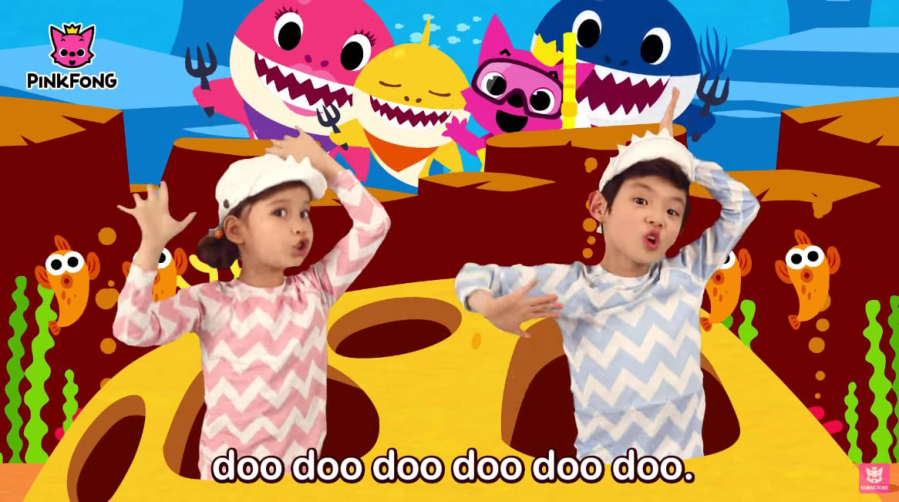
Sound is used to make places where young people collect feel uncomfortable - with high-pitched ('mosquito') audio which only youth can hear. Classical music is also sometimes used, since Boomers believe youngsters do not like it. After protest, a proposal to use atonal music in Berlin stations where drug users collected, was dropped. McDonald's restaurants use sounds like beeping to make extended time in there annoying - they want customers to move along fast. The repeated announcements on public transport quickly become irritating to those who spend more time on there.
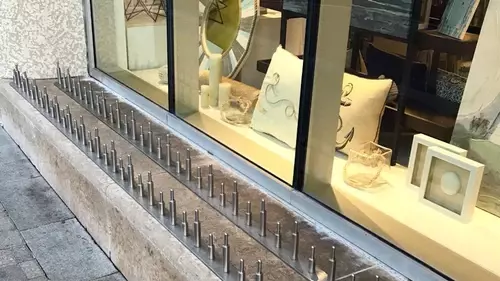
Most buildings have limited accessibility for people who use wheelchairs, those with children in buggies, blind people, etc. Architects and spatial-planners often make their spaces deliberately difficult for skaters to play on.
While many cities are run on turbo-capitalist principles, Vienna has a focus on konsumfrei places, where everybody is welcome, regardless of income (Donaukanal, many new squares, Libelle in MuseumsQuartier). And homelessness is less common here, because of a focus on good housing for all parts of society.
We have all had the experience of walking between tall buildings and being confronted with uncomfortable wind. Or darker surfaces which get so hot in sunshine that we cannot sit on them (eg Enzis at MQ were dark purple one summer, and burnt your bum).
Young children like to sit on floors, and parents often join them, but this is challenging and dangerous in mixed-use spaces, because of traffic, dirt and other users.
What are the features which encourage us to spend more time in public space? Trees and shade, good seating, playful features, access to water and toilets, beauty and other people. Vienna has done some good work in the new millennium to invite more people to spend time outside, with each other, enjoying the new urbanism. But nobody has told so many banks, hotels and shopping centres about this trend towards softer, more sympathetic spaces.
In some cases, removing comfort from public space is aimed at removing some people from those places - by taking away toilets and benches, the public moves on also.
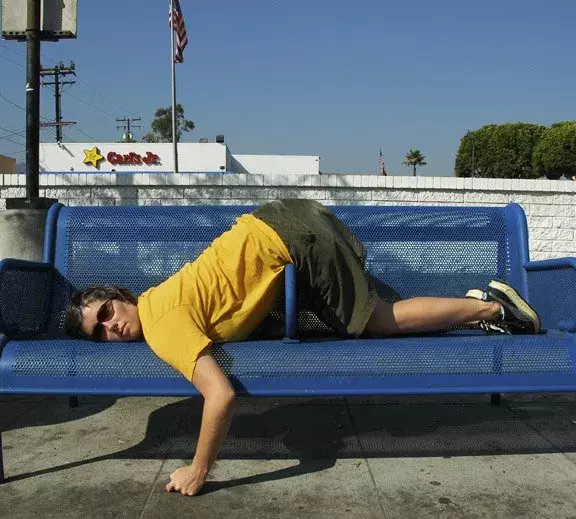
Hostile Design is an urban design strategy to guide or restrict behaviour. We feel that drawing attention to these features might make the public more aware and angry about this development. Playgrounds and other public spaces now often feature individual seating - chairs - rather than traditional, collective benches, which may reflect the modern drift towards individuality and atomisation, against the more old-school sense of being part of a community. We see this in increasing use of earphones while walking in public, people staring at phones instead of talking to each other, and of course in the huge rise in feelings of loneliness.
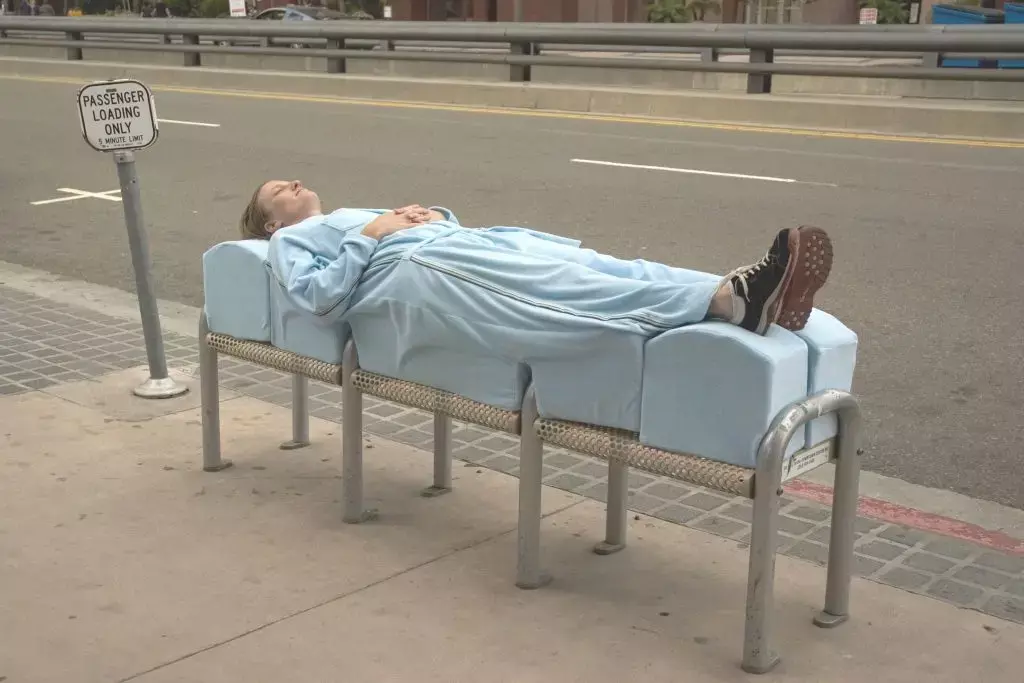
The term hostile architecture is often associated with items like anti-homeless spikes – studs embedded in flat surfaces to make sleeping on them uncomfortable and impractical. Other measures include sloped window sills, benches with armrests positioned to stop people lying on them (ubiquitous at airports) and water sprinklers that spray intermittently. These are forms of social-engineering.
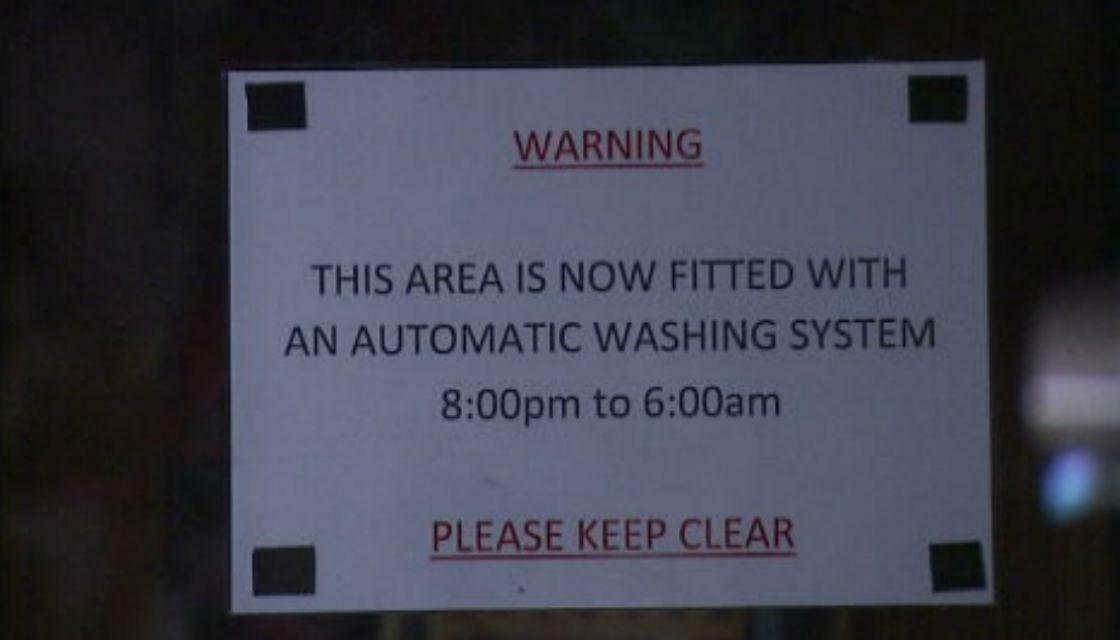
On a larger scale, hostile design can be seen in New York urban planner Robert Moses (the great enemy of Eugene's hero Jane Jacobs) designing a stretch of Long Island Southern State Parkway with low stone bridges so that buses could not pass under them. This made it more difficult for people who relied on public transport (mainly African Americans), to visit the beach that wealthier car-owners could visit. Social control could also be seen in the change from narrow streets in 19th century Paris getting widened, to help the military end protests quickly.
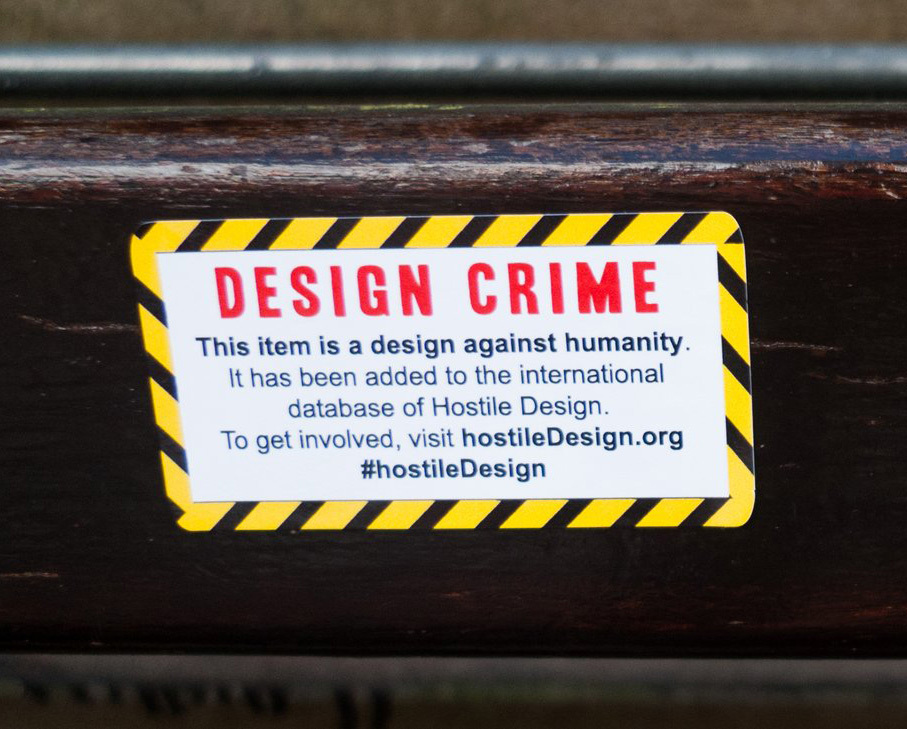
Architects involved in this movement prefer to call their philosophy 'crime prevention through environmental design'(!), using three strategies: natural surveillance, natural access control, and territorial enforcement. According to experts, exclusionary design is increasingly common in large cities such as Stockholm. The ultimate expression of hostile design is gated communities.
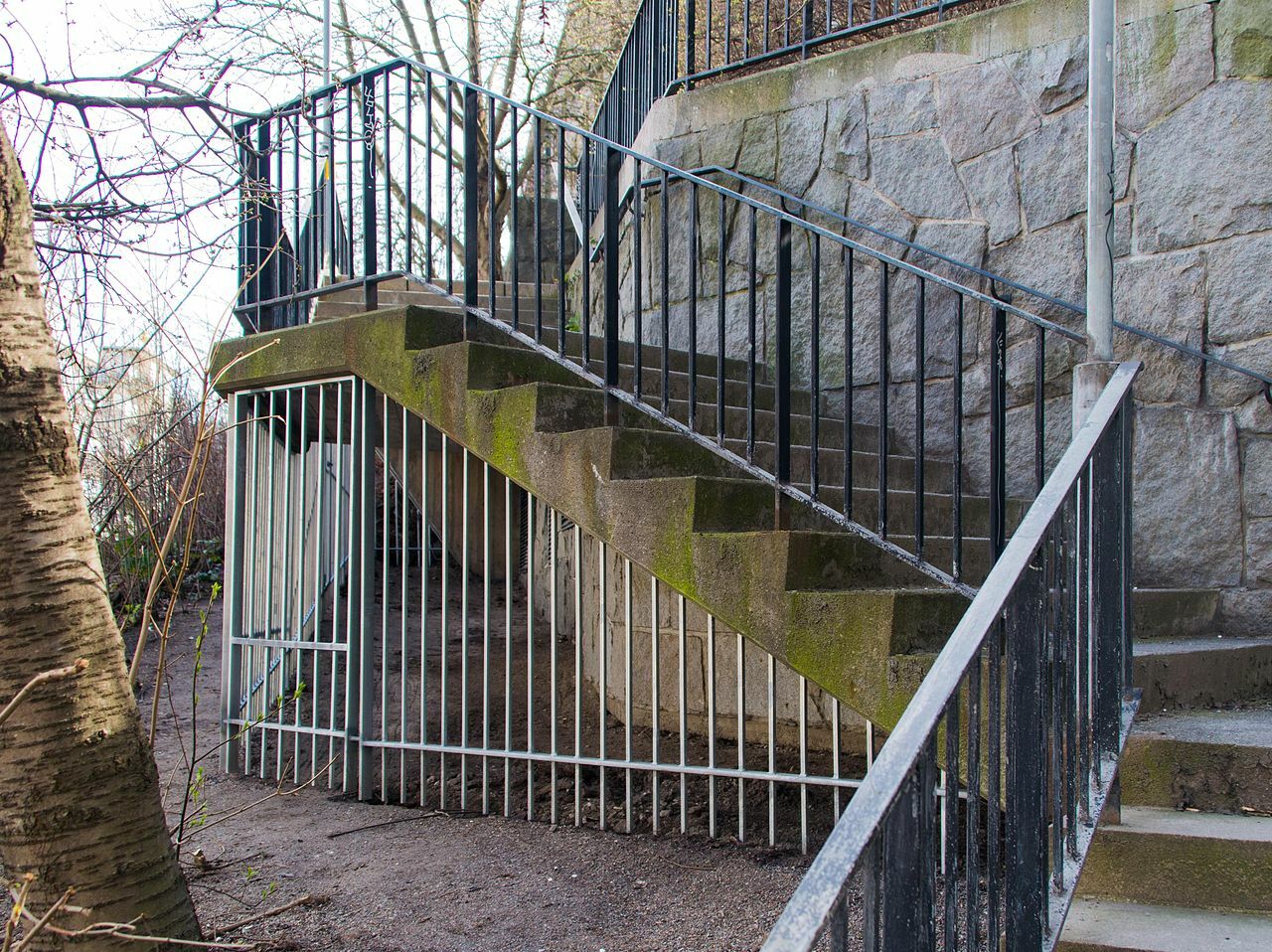
In USA, big rocks often replace grass, to stop anybody camping on ground. But also fences preventing access to so much space - with a particular focus on covered spaces which offer protection from rain (like under bridges and stairs) and also vents offering warm air in winter. Bicycle parking spaces sometimes are used for the same effect. Here we see the paradox of apparently helpful modern infrastructure disguising exclusionary devices. This image also shows this phenomenon - a bench which is inclusive of the LGBTQIA+ community, but hostile to homeless people:
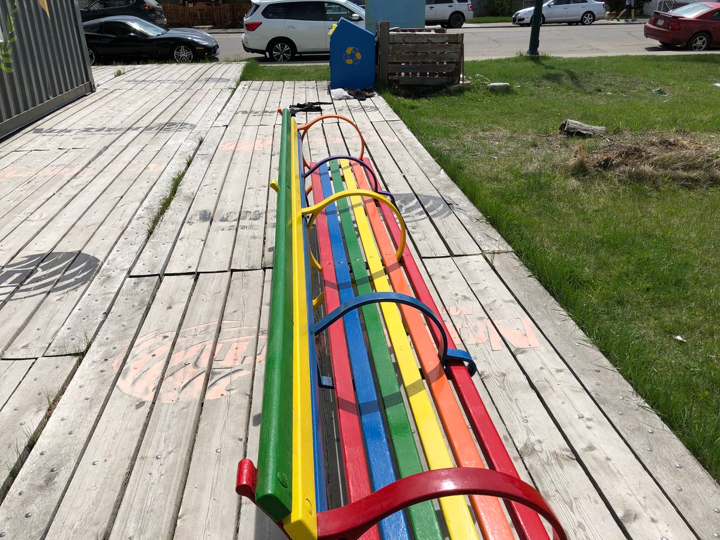
In spots where many people urinate, authorities now put urine deflectors, like big stones, to ensure the person peeing gets wet in the process!
This type of exclusionary design may involve, for example, displaying a large flowerpot where homeless people previously used the pavement to sleep. Other examples that have occurred include a stone painted in rainbow colours, putting out blocking shrubbery on a sidewalk, and "fun" shaped seating.
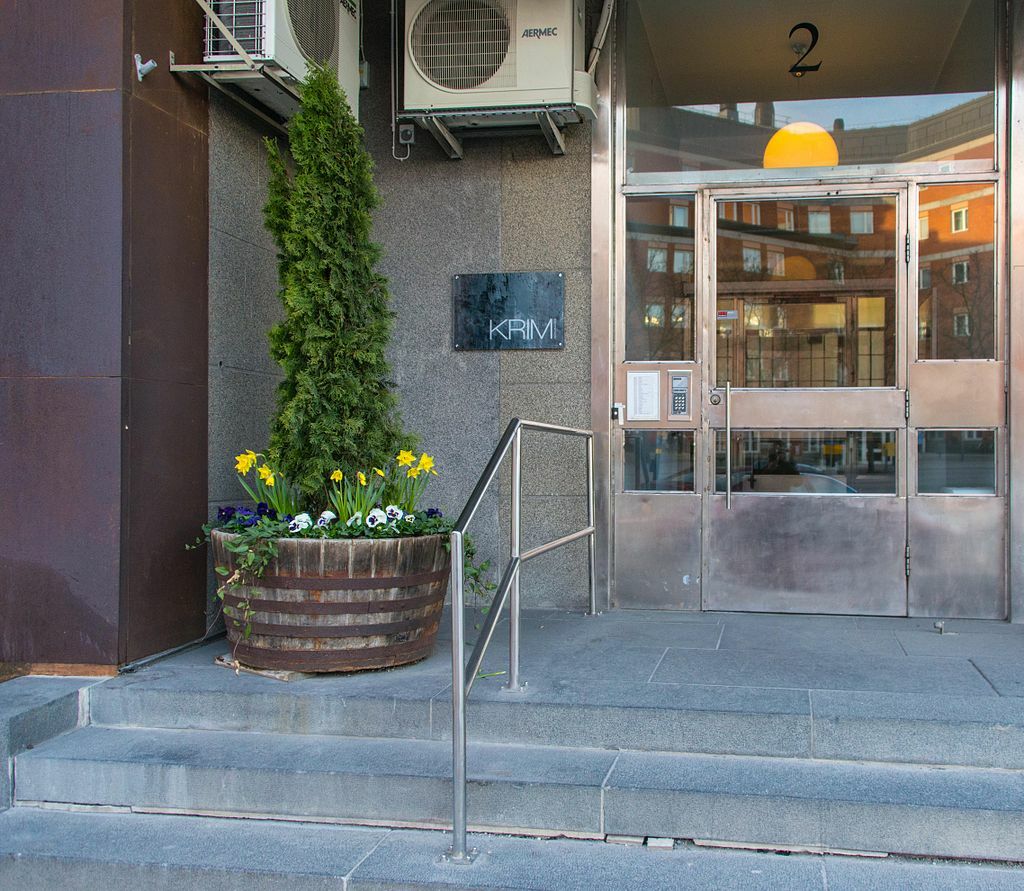
In 2018, British artist Stuart Semple created a social media public awareness campaign encouraging the public to place identifying stickers on instances of hostile design in their environment.
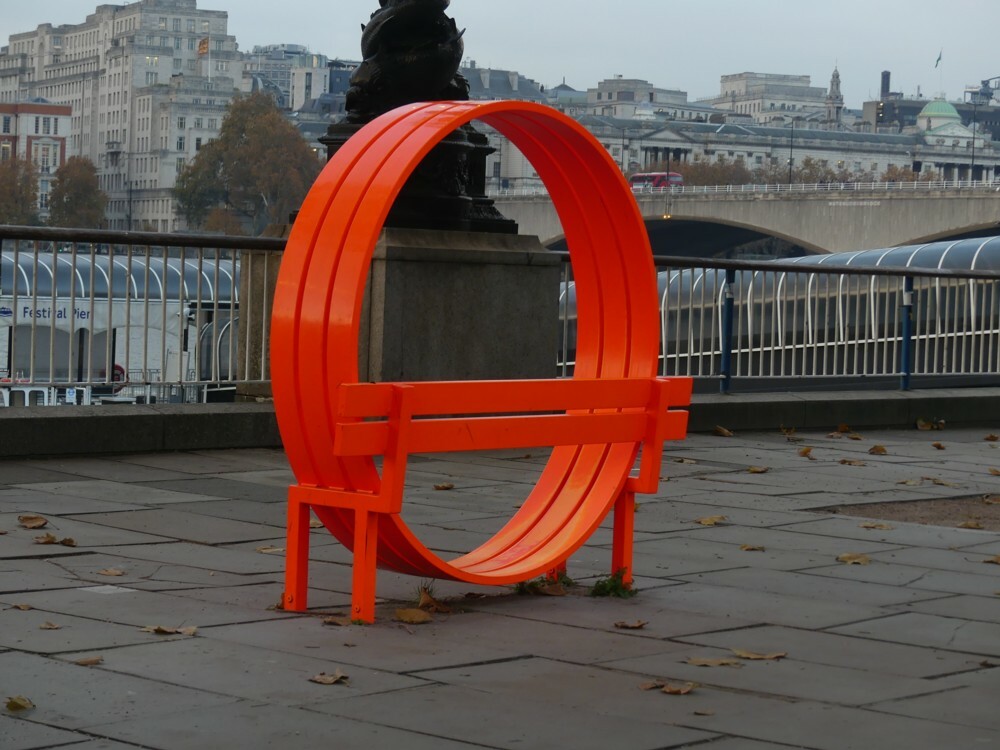
We will make an Instagram campaign highlighting hostile design in Vienna (and naming and shaming groups who designed it), and then make a tour in April, to start a debate on which kind of city we want to live in. This project is a cooperation with four international students on the architecture course at Die Angewandte - and specially Moritz Pfister, who has been pushing to stage an event with us for three years now.
Here you see that the campaign against this trend in architecture and city-planning is not limited to Vienna, but also active in New York City. 17 million views in 3 months!
#hostiledesign
Please follow our Insta hashtag, to see examples around the city... @whatishostiledesign